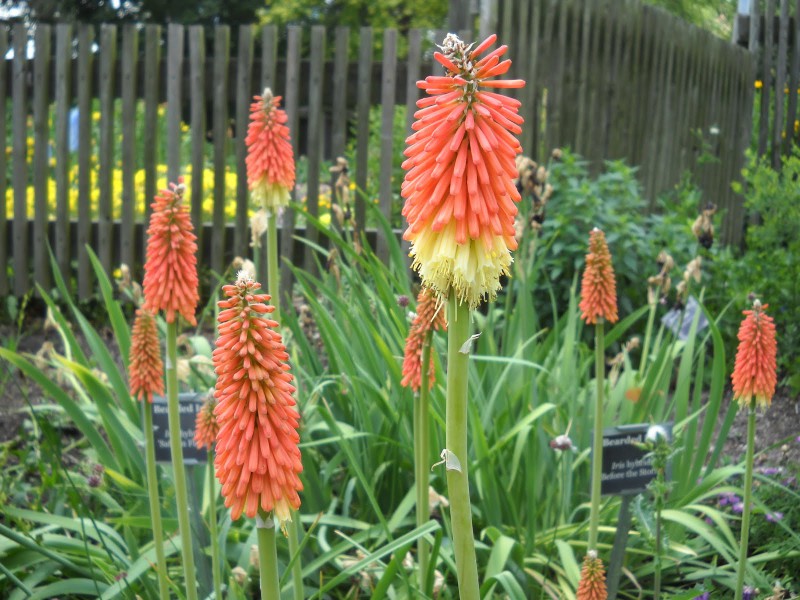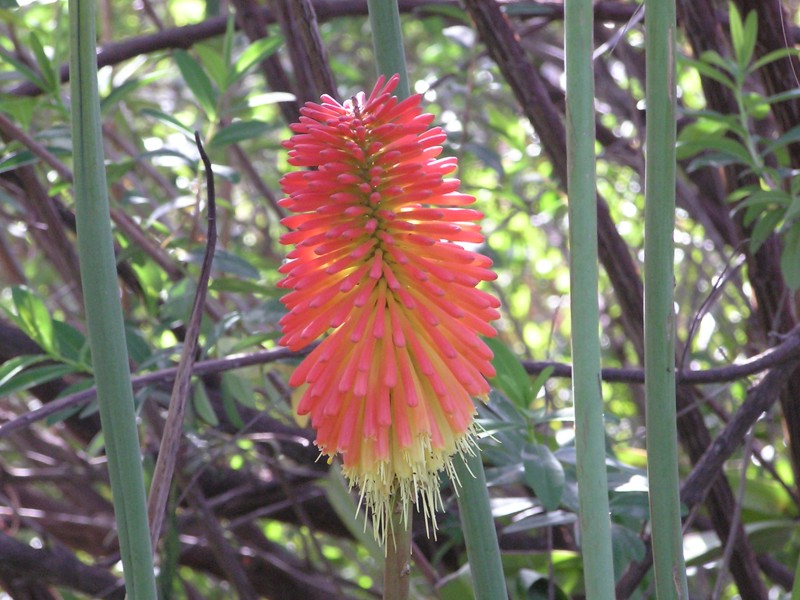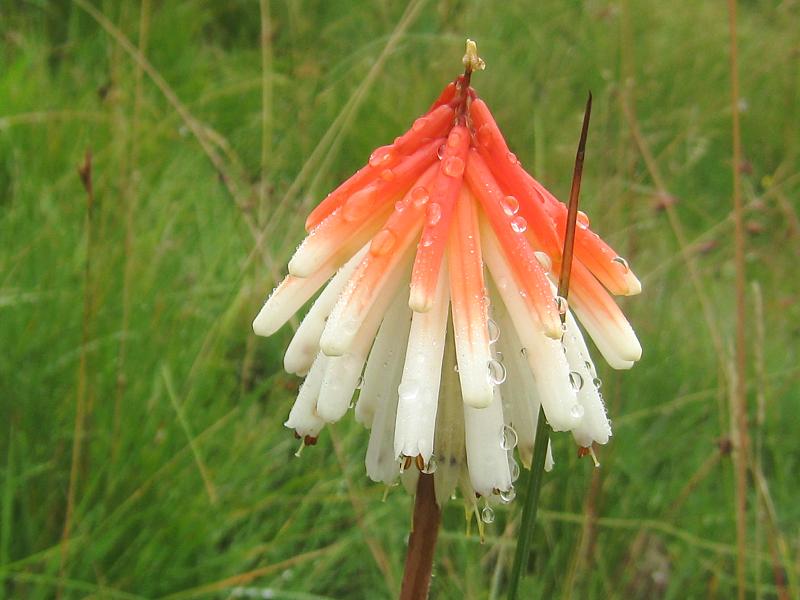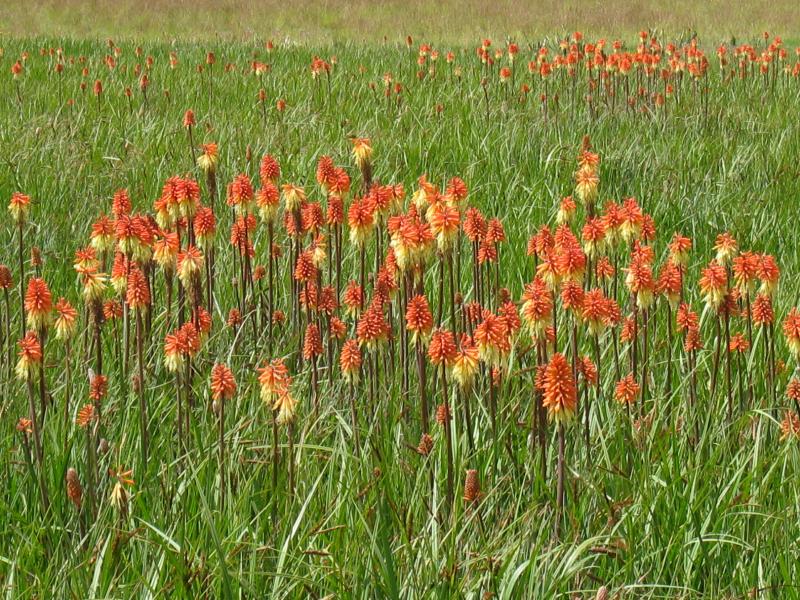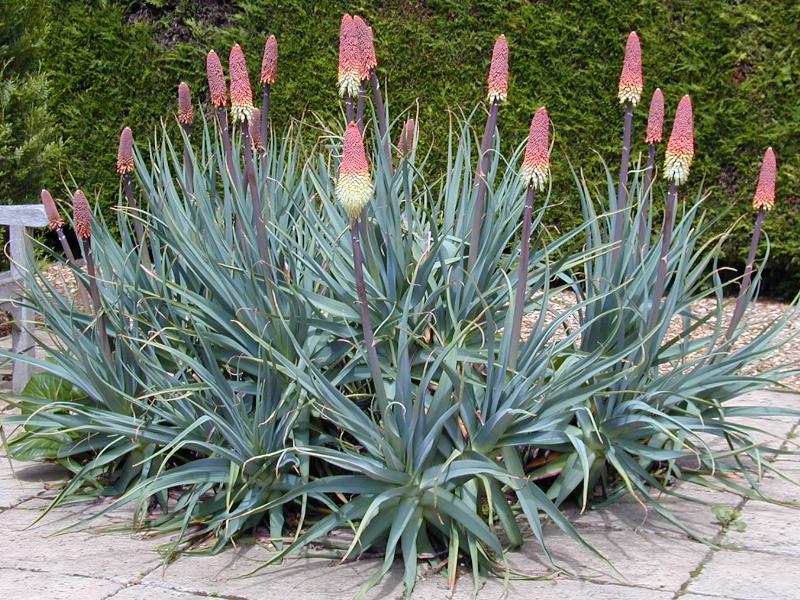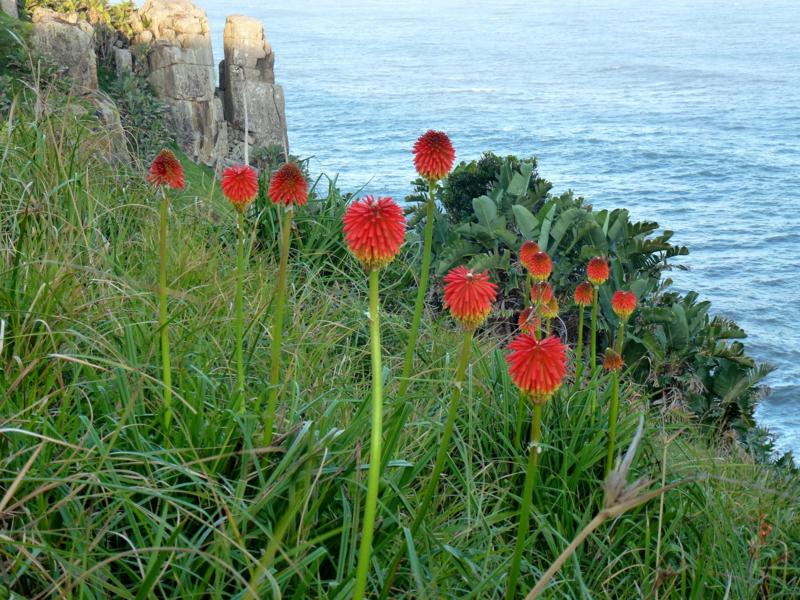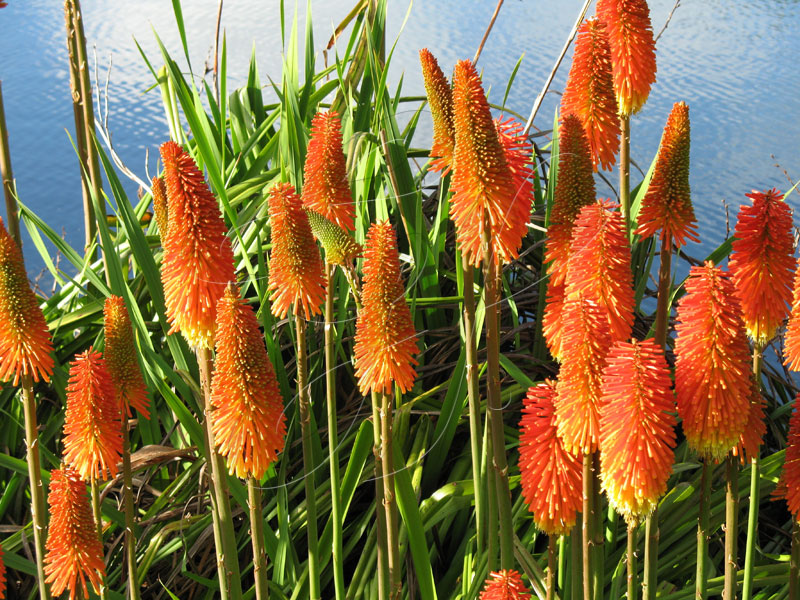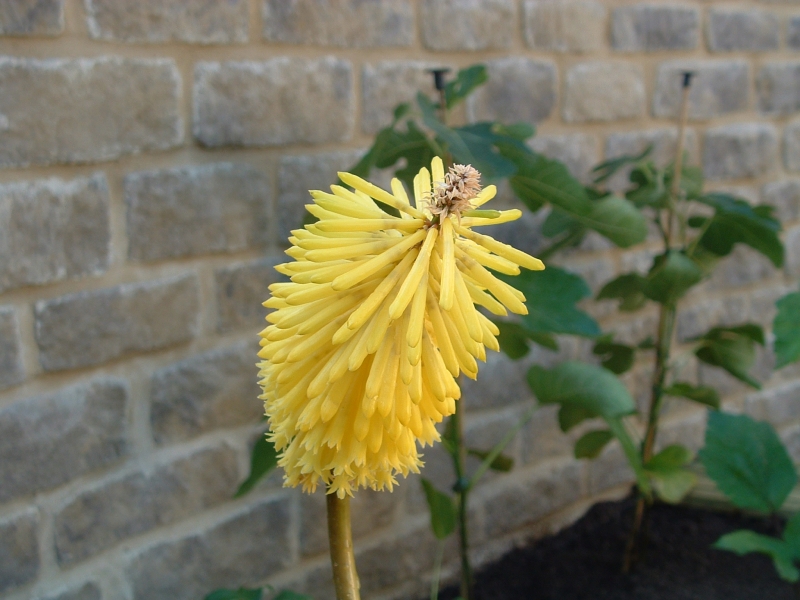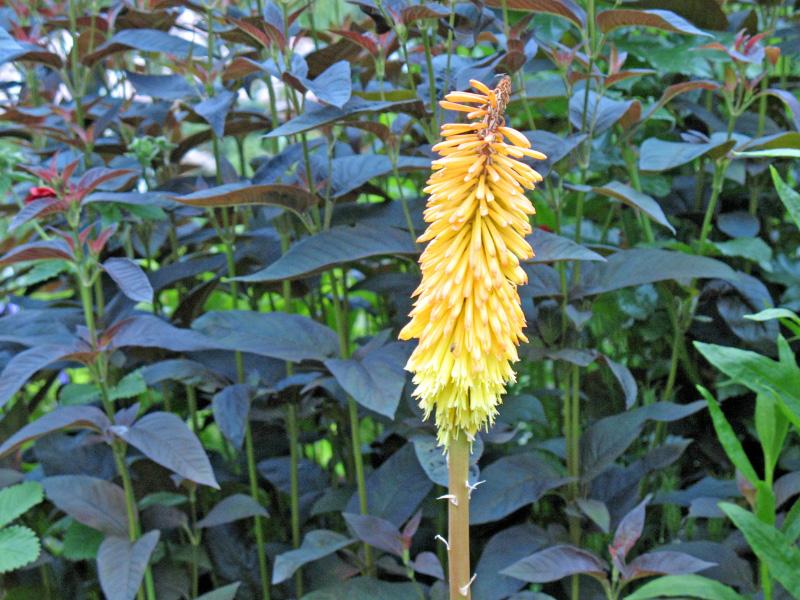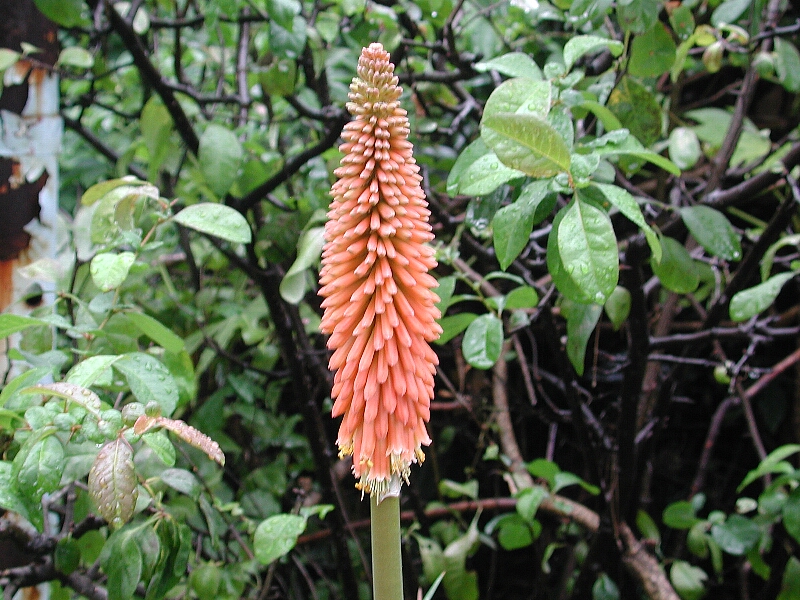GARDEN AND BALCONY FLOWERS24 August 2014
Kniphofia
Posted by Flower
Sunday 24 August 2014 - 18:51:49
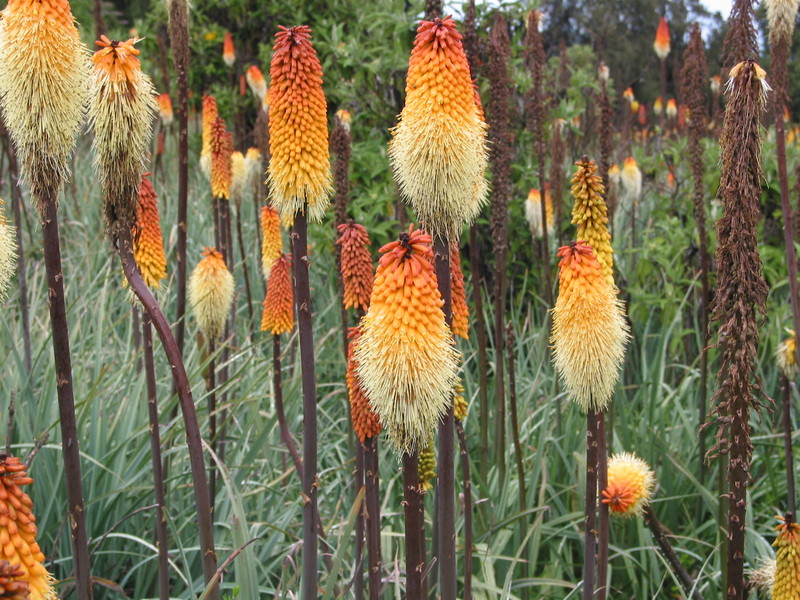
Kniphofia name comes from botany Johann Knifof. Another name is the three-volume. Kniphofia originates from the island of Madagascar, Central and Southern Africa. This flower is about 70-80 species.
Kniphofia is a perennial flowering shrub that under normal conditions reaches from 50 cm to 130 cm. A prima vista our attention is directed to the leaves that are tubular and sword-shaped and quite extended. Their shape is triangular. Kniphofia colors of blooming red or yellow, but there are cases when they are two colors - orange at the top and yellow at the bottom. Kniphofia blooms from the beginning of July to end of August. The size of the clusters occasionally up to 25 cm. Roots Kniphofia (three volumes) are yellow fleshy, thick and make reed joints.
Growing Kniphofia:
Place of Kniphofia:
This plant is very warm temperatures. Kniphofia thrives in a warm, bright location. Watch the site is well protected from currents and winds.
Temteratura for Kniphofia:
Kniphofia thrive at air temperatures of 23 to 30 degrees. Keep in mind that Kniphofia likes and does not withstand major frosts. If there is a hot winter may not survive.
Humidity Kniphofia:
Kniphofia loves damp places. For this and find a place with high humidity such as running water or the presence of groundwater. This will lead to abundant and beautiful flowering plant.
Watering Kniphofia:
Kniphofia should be watered thoroughly. She likes a lot of water and this contributes to the good and growth.
Fertilizing Kniphofia:
During the spring season from April to June should fertilize Kniphofia only mineral fertilizers. During the rest be dressed more moderate again fertilizers.
Soil of Kniphofia:
In the cultivation of the soil Kniphofia need to be air permeable and vapor permeable. This contributes to the roots and not easily rot and the plant will not die. It is also necessary, and the soil is rich in humus and minerals and well drained. So in winter Kniphofia not retain moisture and rotting.
Diseases and pests Kniphofia:
Knifofiite are quite resistant to diseases and pests. Another good quality is that regenerate incredibly faster than any treatment.
Wintering Kniphofia:
After esentta or around the middle and end of October, it is necessary to cover the plant with straw and noise. This will protect it during the cold winter months. It is necessary to leave a third of the leaves uncut. They will prevent further root.
Propagation of Kniphofia:
There are two ways of breeding Kniphofia:
1 By dividing clumps.
By 2 seed.
Propagation of Kniphofia by dividing the clumps:
Do not multiply the plant thus in winter. So Kniphofia can freeze and the plant to die. Propagation by division of clumps is done in the spring from early April to mid-May. You can divide the plant you two, three or more years. After the division of the tufts planted them on the spot illuminated by the sun and high humidity. Individual tufts must be at a distance from one another 30 cm. Were planted at a depth of 10 cm.
Propagation by seed Kniphofia:
Seeds are sown in the period from early April to late June.
Using Kniphofia:
Besides adorns your garden Kniphofia often used for cut flowers. The reason for this is amazing and colors.
Expert advice:
- It is better to clean dead and wilted flowers. This encourages flowering.
- Avoid to grow this plant in a group with others.
This plant is very warm temperatures. Kniphofia thrives in a warm, bright location. Watch the site is well protected from currents and winds.
Temteratura for Kniphofia:
Kniphofia thrive at air temperatures of 23 to 30 degrees. Keep in mind that Kniphofia likes and does not withstand major frosts. If there is a hot winter may not survive.
Humidity Kniphofia:
Kniphofia loves damp places. For this and find a place with high humidity such as running water or the presence of groundwater. This will lead to abundant and beautiful flowering plant.
Watering Kniphofia:
Kniphofia should be watered thoroughly. She likes a lot of water and this contributes to the good and growth.
Fertilizing Kniphofia:
During the spring season from April to June should fertilize Kniphofia only mineral fertilizers. During the rest be dressed more moderate again fertilizers.
Soil of Kniphofia:
In the cultivation of the soil Kniphofia need to be air permeable and vapor permeable. This contributes to the roots and not easily rot and the plant will not die. It is also necessary, and the soil is rich in humus and minerals and well drained. So in winter Kniphofia not retain moisture and rotting.
Diseases and pests Kniphofia:
Knifofiite are quite resistant to diseases and pests. Another good quality is that regenerate incredibly faster than any treatment.
Wintering Kniphofia:
After esentta or around the middle and end of October, it is necessary to cover the plant with straw and noise. This will protect it during the cold winter months. It is necessary to leave a third of the leaves uncut. They will prevent further root.
Propagation of Kniphofia:
There are two ways of breeding Kniphofia:
1 By dividing clumps.
By 2 seed.
Propagation of Kniphofia by dividing the clumps:
Do not multiply the plant thus in winter. So Kniphofia can freeze and the plant to die. Propagation by division of clumps is done in the spring from early April to mid-May. You can divide the plant you two, three or more years. After the division of the tufts planted them on the spot illuminated by the sun and high humidity. Individual tufts must be at a distance from one another 30 cm. Were planted at a depth of 10 cm.
Propagation by seed Kniphofia:
Seeds are sown in the period from early April to late June.
Using Kniphofia:
Besides adorns your garden Kniphofia often used for cut flowers. The reason for this is amazing and colors.
Expert advice:
- It is better to clean dead and wilted flowers. This encourages flowering.
- Avoid to grow this plant in a group with others.
This page showed: 1365





